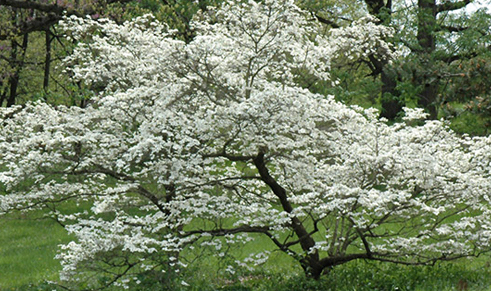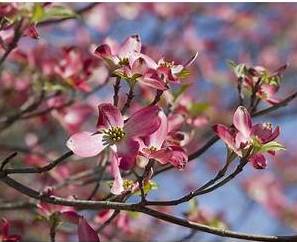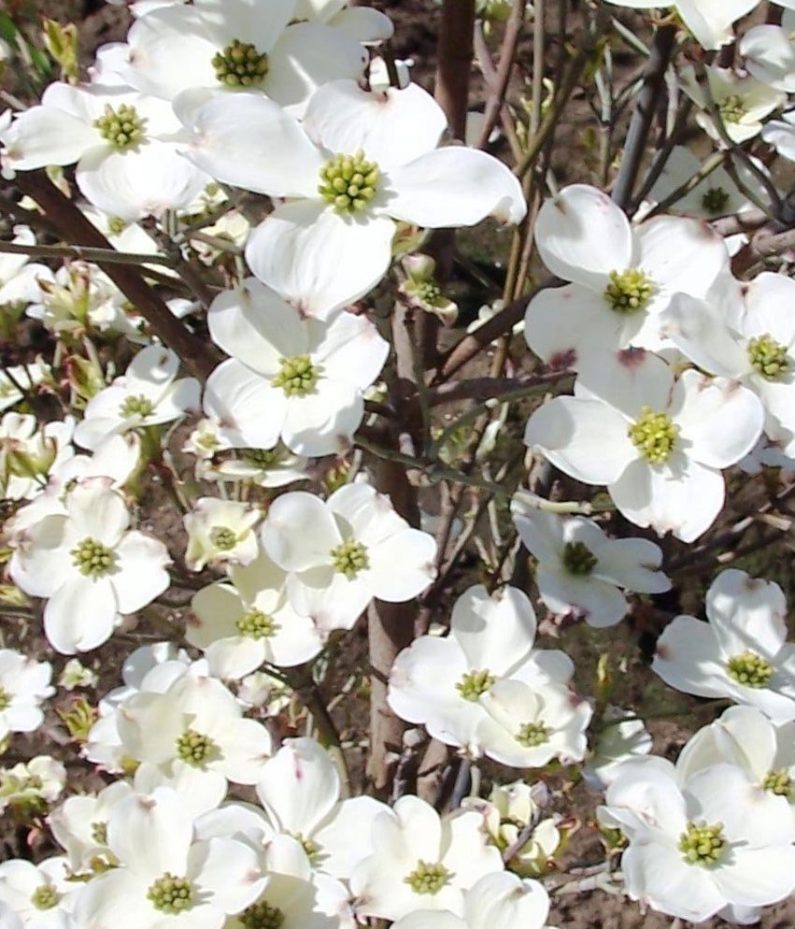
As designee of the Old North State, Cornus florida or the flowering dogwood, as it is commonly known, serves as the official state flower. It is actually the blossom of the dogwood tree that was chosen as the official representative and it is easy to see why. This delightful species dots the North Carolina landscape from the mountains to the coastal counties and can be seen growing wild throughout the state as well as cultivated in manicured gardens. Adopted in 1941 as the official state flower, it represents us well. The pretty blooms paint the landscape in a range from snowy white flowers to light pink to red. They offer a beautiful backdrop to the emerging springtime show. I used to love criss-crossing the State in springtime and seeing the dogwoods growing wild in the woodlands along the backroads of NC.

However, this ornamental tree provides year-round interest to the more deliberate garden landscape as well. While the flower blooms or bracts appear in spring, the attractive green foliage remains after blooming is complete. The fall foliage offers an array of orange and red colors along with brilliant red berries. In wintertime, small buds appear on the branches. The year-round seasonal interest makes the dogwood tree a versatile choice for the North Carolina gardener. This species is great as a specimen or accent plant as well as an understory tree in a more natural area of the landscape, and looks great paired with azaleas. In addition, it works as a foundation planting to add interest to the home.

The dogwood is typically easy to grow as it can adapt to various soils and sunlight exposure. Yet, it prefers moist, well-drained soil and light shade or dappled sunlight. Too much shade can run the risk of a fungal disease so you want to make sure that it receives enough sunlight as well as good air circulation. Dogwoods typically do best with morning sun and afternoon shade. As with most newly planted trees and shrubs, it is important to make sure that a newly planted dogwood tree receives plenty of water during dry periods to reduce stress. A three to four inch layer of mulch will help to retain soil moisture. Dogwoods can grow 15 to 30 feet in height. Cornus kousa, a cousin of Cornus florida, is also a great selection which blooms a little later. There are many colorful cultivars to choose from making this a great landscape selection.

Springtime in North Carolina would not be the same without the wide-spreading colorful canopies of the flowering dogwood. The excitement and anticipation of the beautiful blooms that line the streetscapes, yards and woodlands is unmatched by any other season. For North Carolinians, dogwoods are a part of the annual announcement that spring has finally arrived. Get ready y’all!

